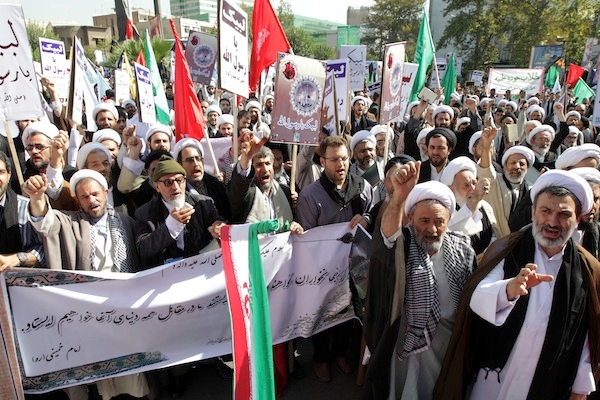Thousands of Iranians took to the streets this week to protest inflation and the collapse of Iranian currency on international markets. Tehran’s historic Grand Bazaar closed for business with many of its merchants leading the demonstrations.
This will worry the government because traders there are normally seen as bridging the gap between clerics and Iran’s influential mercantile classes. The atmosphere inside the Bazaar is a useful barometer of Iranian political discontent.
During the abortive Green Revolution in 2009 which challenged Ahmadinejad’s re-election, merchants from the Grand Bazaar offered only muted support. In 1979 they swung decisively behind the Islamic Revolution and helped unseat the Shah, having previously secured concessions from the monarchy a century earlier.
Although Ahmadinejad tried to contain the protests by ordering shop keepers to open their stores today, most have stayed closed. Posters declaring ‘Leave Syria alone, think of us instead’ have sprung up around the Bazaar.
The government has responded by cracking down on currency traders, but this will not address the endemic crisis facing Iranian exchange.

Get Britain's best politics newsletters
Register to get The Spectator's insight and opinion straight to your inbox. You can then read two free articles each week.
Already a subscriber? Log in






Comments
Join the debate for just £1 a month
Be part of the conversation with other Spectator readers by getting your first three months for £3.
UNLOCK ACCESS Just £1 a monthAlready a subscriber? Log in